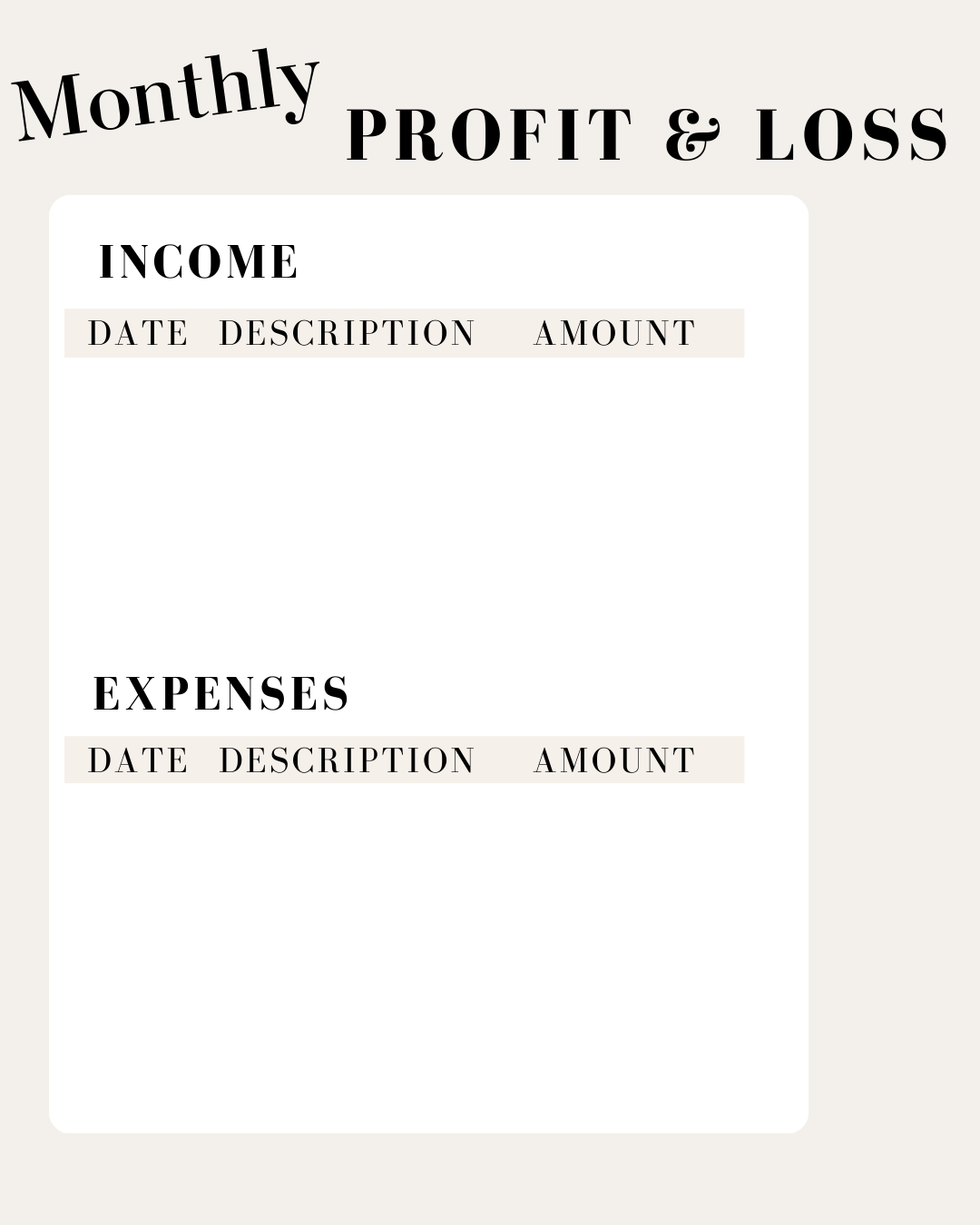#5 Profit and Loss Statement
Part 5 of 7
Having a P&L statement can help the business secure financing from banks or other investors.
Most small businesses need some form of financing, whether it's a loan from a bank or investment from a venture capitalist. One of the things lenders and investors will ask for is a profit and loss (P&L) statement. The P&L statement serves as a critical tool for investors to assess the financial performance, profitability, and overall health of a business. It provides valuable information that aids in investment decision-making and helps investors understand the potential risks and rewards associated with their investment.
Investors are interested in reviewing a business's profit and loss (P&L) statement for several reasons, as it provides crucial insights into the financial health and performance of the company. Here are some key reasons why investors, including potential lenders and shareholders, want to see a business's P&L statement:
Financial Performance Assessment: Investors use the P&L statement to evaluate a company's financial performance over a specific period. It provides a summary of revenues, costs, and expenses, allowing investors to assess profitability and overall financial health.
Profitability Analysis: The P&L statement helps investors understand the company's profitability by revealing the gross profit margin, operating profit margin, and net profit margin. These metrics offer insights into how efficiently the business is generating profits and managing costs.
Operational Efficiency: Investors can analyze the P&L statement to gauge the efficiency of the company's operations. By examining various expense categories, they can identify areas where cost control measures may be necessary or where operational improvements could be made.
Risk Evaluation: The P&L statement aids investors in assessing the financial risks associated with the business. Understanding the company's revenue sources, cost structure, and overall financial stability helps investors evaluate the level of risk involved in their investment.
Revenue Trends: Investors use the P&L statement to track revenue trends over time. This information is crucial for understanding the company's sales growth, market share, and the effectiveness of its business strategies.
Investment Decision Making: Potential investors rely on the P&L statement to make informed investment decisions. It allows them to compare the financial performance of different companies and industries, helping them choose investments that align with their risk tolerance and financial objectives.
Cash Flow Implications: While the P&L statement primarily focuses on profits and losses, investors also use it to assess the cash flow implications of the company's operations. Understanding how profits translate into cash generation is vital for evaluating liquidity and the company's ability to meet its short-term obligations.
Budgeting and Planning: Investors want to see evidence of effective financial planning and budgeting in the P&L statement. Consistent monitoring of revenues and expenses helps assess the company's ability to meet its financial goals and adapt to changing market conditions.
Communication and Transparency: A well-prepared P&L statement demonstrates transparency and effective communication on the part of the company's management. Investors appreciate businesses that provide clear and comprehensive financial information, as it fosters trust and confidence.
Strategic Decision Making: Investors use the P&L statement to understand how management's strategic decisions impact the company's financial results. This includes evaluating the success of pricing strategies, marketing initiatives, and cost management practices.
In summary, the P&L statement serves as a critical tool for investors to assess the financial performance, profitability, and overall health of a business. It provides valuable information that aids in investment decision-making and helps investors understand the potential risks and rewards associated with their investment.
So, if you're a small business owner looking for financing, be sure to have a P&L statement ready to show your lender or investor. It could make the difference between getting the money you need and being turned down.

